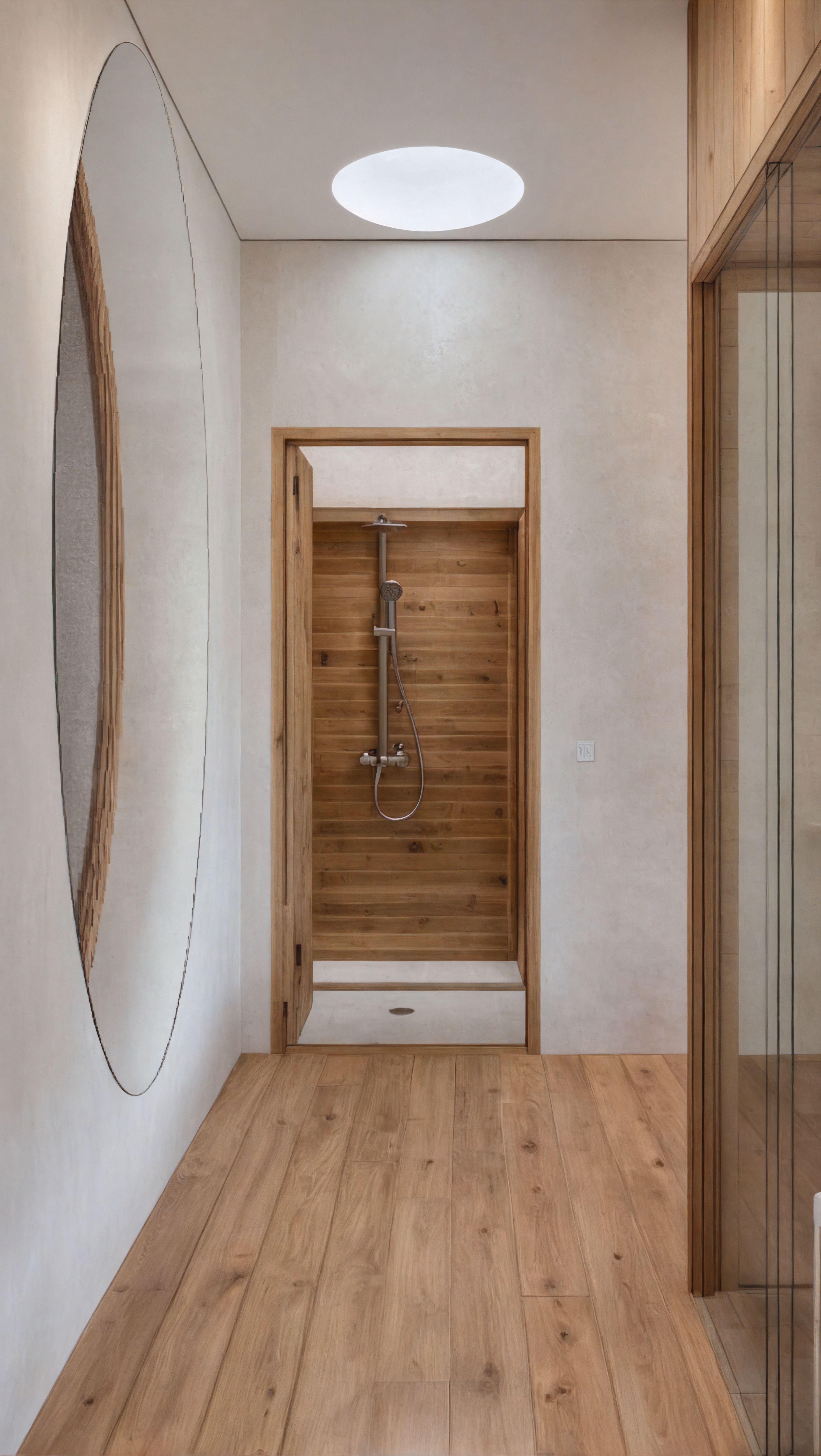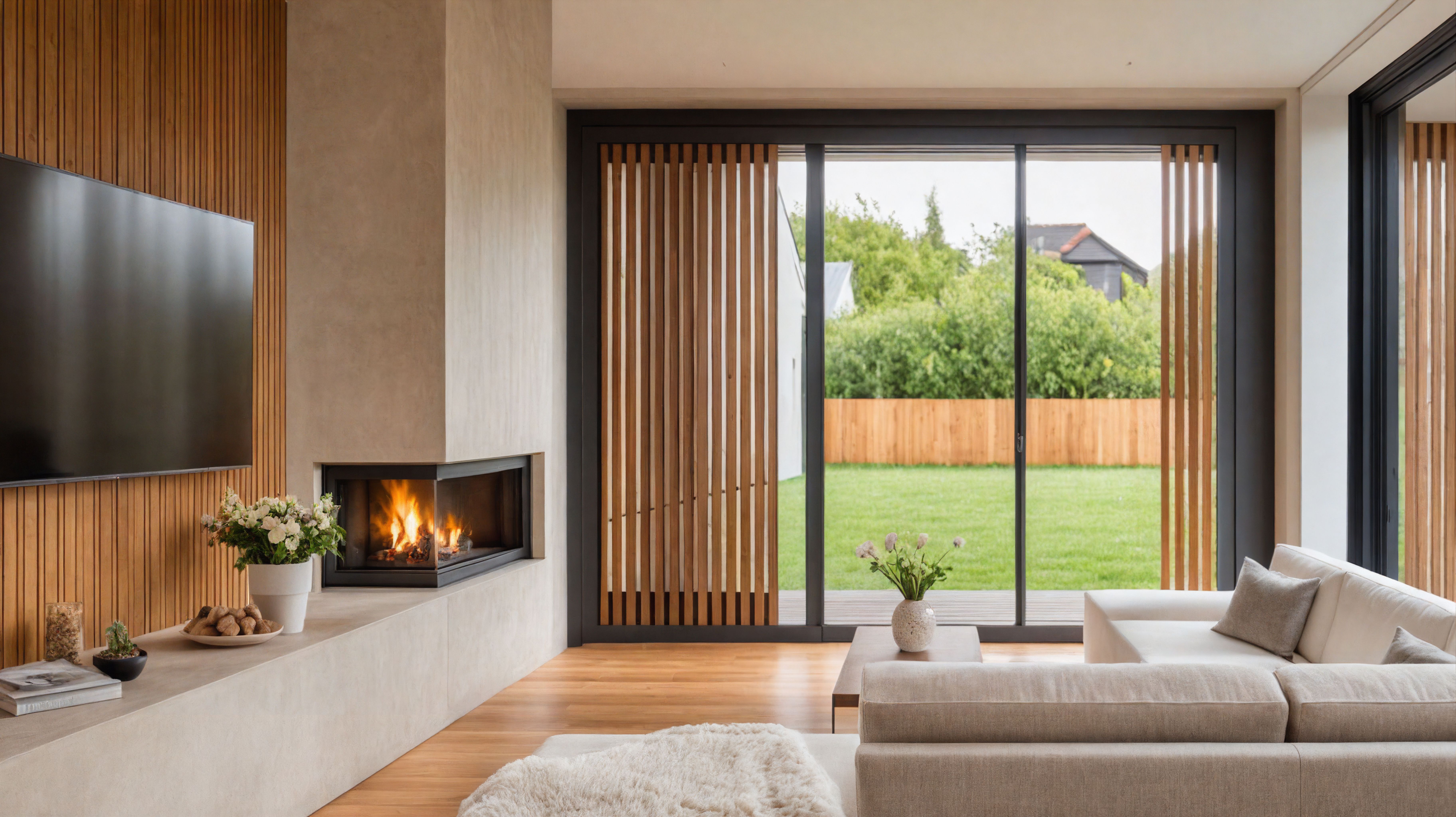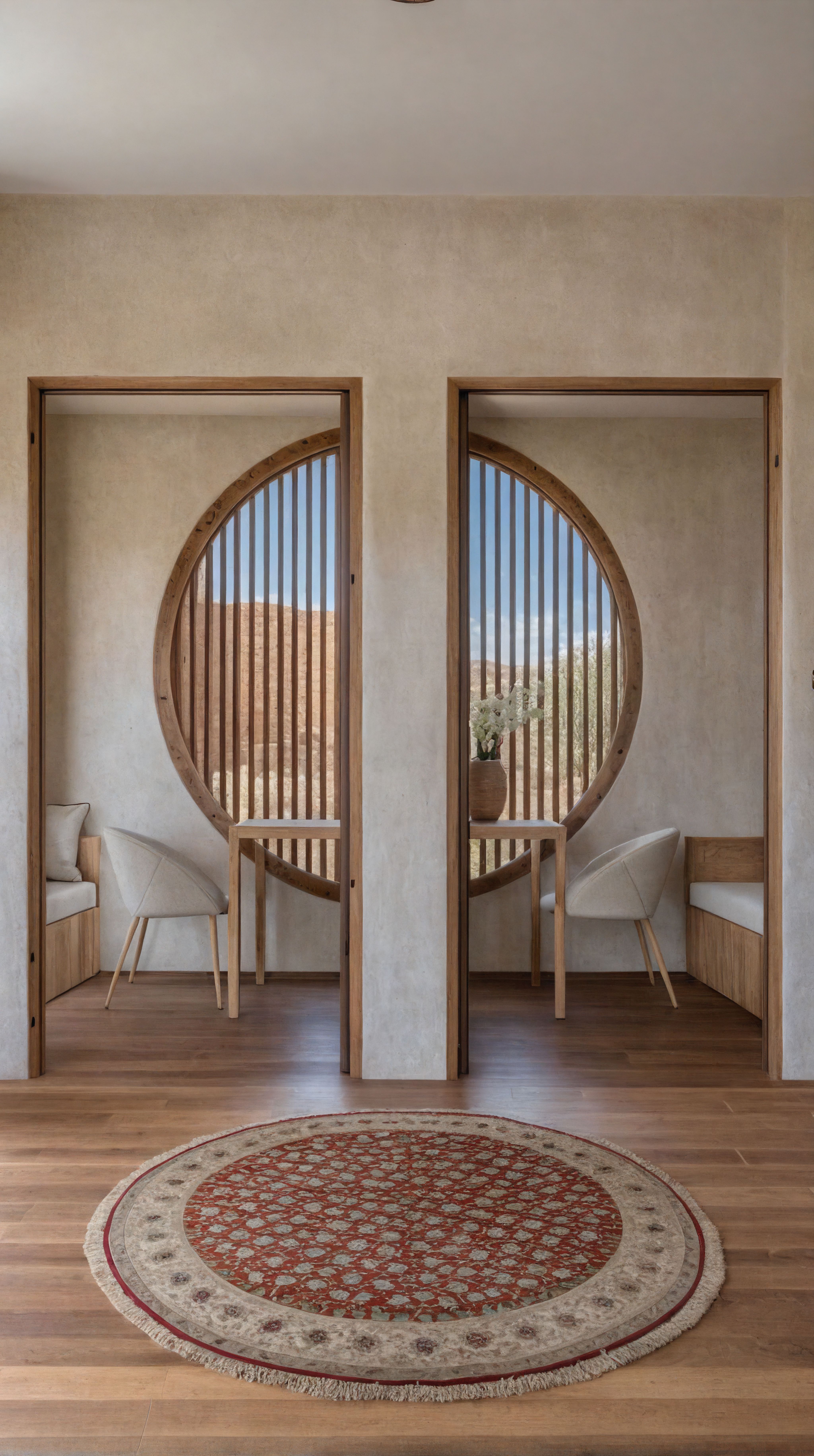The difference between AI and traditional architectural rendering is dramatic. AI rendering platforms like Visoid complete visualizations in seconds rather than the hours or days traditional methods demand. While traditional architectural rendering offers precise control (at the cost of late nights and expensive hardware upgrades), today's AI visualization solutions deliver professional-quality results with minimal technical expertise. The democratization of visualization has been revolutionary for small and mid-sized firms that previously couldn't compete with larger offices on visualization quality.
Architectural visualization has evolved dramatically over the decades, from hand-drawn perspectives to computer-aided rendering and now to AI-powered solutions. Each evolution has made visualization more accessible and efficient, but the leap to AI rendering represents perhaps the most significant paradigm shift in the field.Traditional rendering methods have long been the standard for architectural visualization, requiring specialized software, powerful hardware, and technical expertise. While these methods offer precise control, they come with significant time and resource investments. AI architectural rendering is now disrupting this established approach by leveraging machine learning to automate and accelerate the visualization process.Understanding the key differences between these approaches is essential for architectural practices making strategic decisions about their visualization workflows. For a comprehensive overview of practical applications, see 5 ways to use AI for architectural visualization.

Traditional architectural rendering is notoriously time-intensive. A single high-quality image typically requires:
- Several hours to set up materials, lighting, and camera positions
- Hours of rendering time, depending on complexity and quality settings
- Additional time for post-processing and adjustments
This process can extend to days or even weeks for a typical project requiring multiple views, creating bottlenecks in the design process and client communications.
AI rendering platforms like Visoid have revolutionized visualization timeframes:
- Initial setup takes minutes (screenshot capture and prompt writing)
- Rendering processing time is reduced to seconds
- Adjustments and variations can be generated almost instantly
This represents a time reduction of approximately 90% compared to traditional methods, according to Visoid's documented performance. What once took days now takes minutes, allowing architects to generate visualizations. For a detailed analysis of time savings, read How AI Rendering Can Save You Time.
Architects can now make changes and generate new architectural visualizations immediately when clients ask about alternative materials or design options. Clients can make immediate decisions, shaving weeks off project timelines.
This speed difference fundamentally changes how visualization integrates into the architectural workflow:
- Client feedback can be incorporated immediately with new visualizations generated on the spot;
- Design iterations can be visualized in real time during team meetings;
- Last-minute presentation needs can be accommodated without compromising quality;
- Visualization becomes an active design tool rather than a final deliverable.

Traditional Rendering Costs
The costs associated with traditional architectural rendering can strain resources for architectural practices:
Outsourced Traditional Rendering
For a typical project requiring 10-20 visualizations, costs can quickly escalate to thousands or tens of thousands of euros. Small firms are often forced to limit their visualizations to only three renders, even though they could produce more with Visoid.
AI Rendering Costs
AI architectural rendering introduces a fundamentally different cost structure:
- Subscription-based;
- No specialized hardware required: Works on standard computers;
- Minimal training needed: Accessible to architects without rendering expertise.
For the same project requiring 10-20 visualizations, the cost would be a single month's subscription, potentially representing cost savings of 90-99% compared to traditional methods.
Small practices that previously spent thousands per month on outsourced visualization can redirect those resources to hiring additional staff when switching to AI visualization.

Traditional rendering software demands substantial computing power:
- High-performance GPUs (often multiple);
- Powerful multi-core CPUs32 GB+ RAM for complex scenes;
- Fast storage solutions for large files;
- Regular hardware upgrades to maintain performance;
These requirements represent significant capital investments and ongoing upgrade costs. Many architects spend thousands every 18 months just to keep pace with software demands.
Traditional rendering software demands substantial computing power:
- High-performance GPUs (often multiple);
- Powerful multi-core CPUs32 GB+ RAM for complex scenes;
- Fast storage solutions for large files;
- Regular hardware upgrades to maintain performance;
These requirements represent significant capital investments and ongoing upgrade costs. Many architects spend thousands every 18 months just to keep pace with software demands.
AI architectural rendering platforms like Visoid have minimal local hardware requirements:
- Standard computer or laptop;
- Basic internet connection;
- Web browser
- No specialized graphics hardware needed.
All intensive processing occurs in the cloud, eliminating the need for powerful local hardware and democratizing access to high-quality visualization. This accessibility has been transformative for many firms, as highlighted in Making visualization more accessible: A conversation with PANL. Professional architectural visualizations can now be created on four-year-old laptops while traveling, something that would have been unthinkable with traditional rendering methods.
This fundamental difference in technical requirements creates new workflow possibilities:
- Visualizations can be generated from computers or tablets;
- Remote work becomes fully supported for visualization tasks;
- No performance degradation over time as hardware ages;
Architects can generate visualizations for client meetings from tablets while waiting at airports—a capability that feels somewhat magical compared to the tethered workstation days of traditional rendering.

The traditional architectural rendering process involves multiple complex steps:
1. Detailed 3D modeling with precise geometry
2. Extensive material setup and property adjustments
3. Complex lighting configuration
4. Camera setup and composition
5. Test renders and adjustments
6. Final rendering (often overnight)
7. Post-processing in image editing software.
This workflow requires specialized knowledge at each stage and creates natural breaks in the design process. Projects can be delayed by weeks simply due to rendering bottlenecks.
AI architectural rendering dramatically simplifies the visualization process:
1. Screenshot capture of 3D model
2. Upload to a web-based platform
3. Text prompt creation describing the desired outcome
4. One-click generation
5. Review and refinement, if needed
This streamlined approach integrates seamlessly into the design process, allowing visualization to become an iterative tool rather than a final deliverable.
When architects first see this workflow demonstrated, there's often disbelief at how much of the traditional visualization process has been eliminated.
These workflow differences affect how architectural teams operate:
- Traditional rendering often requires dedicated visualization specialists;
- AI visualization can be performed by the architects themselves;
- Collaboration becomes more fluid with rapid visualization feedback;
- Design and visualization processes can merge rather than being sequential.
Many firms have been able to reassign their visualization specialists to more creative roles, enhancing their design capabilities while maintaining or improving their visualization output.
Traditional architectural rendering offers:
- Maximum control over every visual element;
- Precise material properties and behaviors;
- Physically accurate lighting simulation;
- Complete customization of every detail.
There's a certain satisfaction in crafting every aspect of a visualization with traditional methods.
AI architectural rendering provides:
- Professional-quality results with minimal setup;
- Photorealistic materials and lighting;
- Atmospheric and contextual elements;
- Stylistic flexibility through prompt adjustments.
The quality gap between these approaches has narrowed significantly. While traditional rendering still offers maximum control, AI rendering produces results that meet professional standards for most architectural visualization needs.
When comparing outputs from both methods:
- Traditional rendering excels in technical precision and specific detail control;
- AI visualization excels in the rapid production of photorealistic imagery;
- Both can produce client-ready, professional visualizations
- The visual difference is often indistinguishable to clients and non-specialists.
Becoming proficient in traditional rendering and advanced 3d modelling typically requires:
- Rendering software operation (V-Ray, Corona, Lumion, etc.);
- Material creation and adjustment;
- Lighting techniques and setup;
- Post-processing methods;
- Technical troubleshooting.
Developing these skills typically requires months or years of dedicated training and practice. Many architectural practices simply can't afford this investment for their team members.
AI architectural rendering requires:
- Basic understanding of 3D modeling (to create the initial model);
- Effective prompt writing skills;
- Understanding of design intent communication;
- Basic image composition principles.
These skills align closely with architects' existing expertise, making the learning curve much shorter, typically days rather than months.
Entire architectural teams can be trained on AI rendering in a single afternoon workshop, with everyone producing professional-quality visualizations by the end of the day.
Traditional rendering: Valuable for technical studies and precise material testing
AI visualization: Ideal for quick design iterations, material explorations, and testing multiple design directions.
The speed of AI rendering allows architects to explore design options they would have previously dismissed due to time constraints. This leads to better design outcomes and more satisfied clients.
Traditional rendering: Still preferred for signature projects and competition entries
AI visualization: Enables comprehensive visualization of more projects, expanding portfolio breadth.
Small practices can now develop comprehensive visualization packages for their entire portfolio, something that would have been prohibitively expensive with traditional rendering methods.
We're seeing the beginning of hybrid approaches that combine the strengths of both methods:
- AI-assisted traditional rendering to speed up material and lighting setup;
- Traditional rendering techniques being incorporated into AI platforms
- Workflow integrations that allow seamless transitions between approaches.
The potential for AI to handle the time-consuming aspects of traditional rendering while preserving the precise control that some projects require is particularly promising.
Forward-thinking architectural practices are developing workflows that leverage both approaches:
- AI visualization for design development and client communication;
- Traditional rendering for final marketing images when needed
- AI for quantity, traditional for specialized quality.
Many firms are developing these hybrid workflows, tailoring the approach to their specific needs and project types.
The architectural visualization industry is responding to these changes:
- Traditional rendering software incorporating AI elements;
- Visualization specialists developing expertise in both approaches;
- Clients are becoming accustomed to faster turnaround expectations.
The difference between AI and traditional architectural rendering represents a fundamental shift in how visualization integrates into architectural practice. While traditional rendering offers maximum control at the cost of time and resources, AI rendering provides professional-quality results with dramatically faster turnaround times and lower costs.
Rather than viewing these approaches as competitors, forward-thinking architectural practices are recognizing them as complementary tools in a comprehensive visualization strategy. The choice between them depends on specific project needs, timeline constraints, and visualization goals.
As AI visualization technology continues to advance, the quality gap will likely narrow further, while the efficiency advantages remain. Architectural practices that strategically integrate both approaches will be best positioned to leverage the strengths of each, enhancing both their design process and client communications.
Embracing AI rendering frees architects to focus more on design and client relationships rather than technical visualization processes. The technology doesn't replace expertise, it amplifies it.